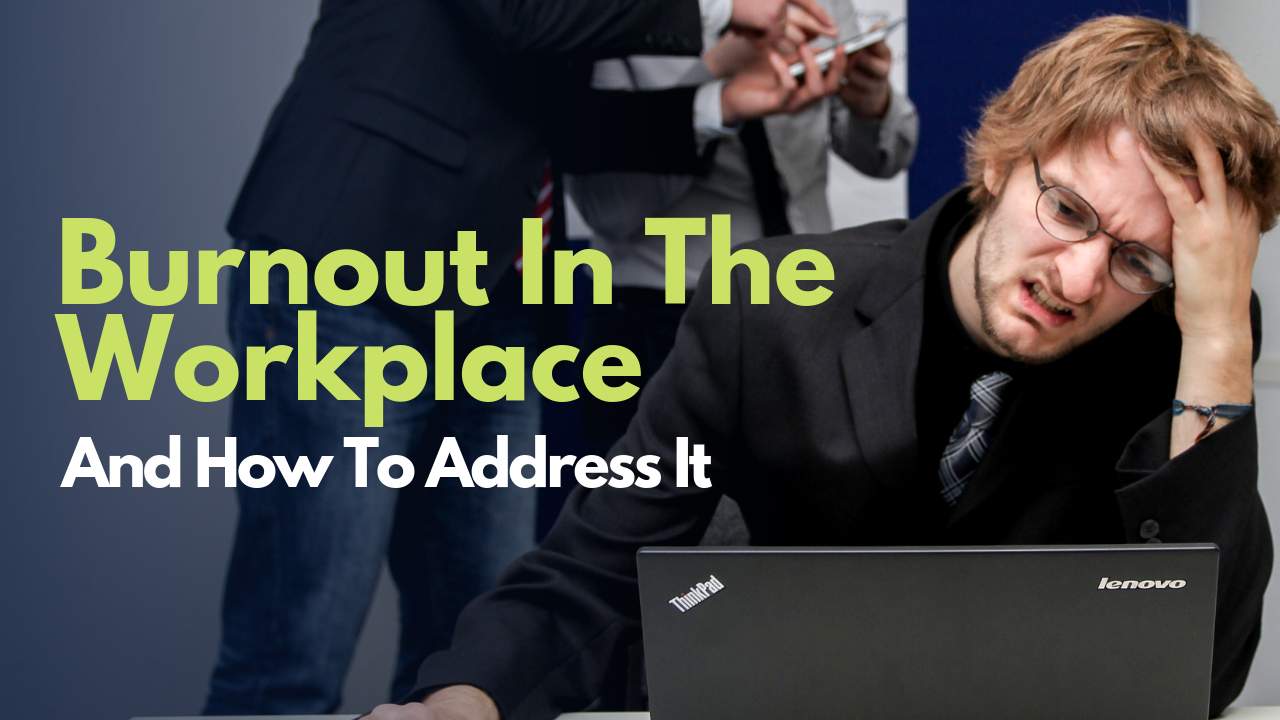The World Health Organization (WHO) now recognizes burnout as an “occupational phenomenon”.
Burnout is defined by the WHO as a syndrome resulting from chronic workplace stress that has not been successfully managed.
Don’t let stress get out of hand. These 6 tips offer easy and practical advice on how to deal with burnout in the workplace.
The World Health Organization (WHO) included burnout as an “occupational phenomenon” in the 11th Revision of the International Classification of Diseases (ICD-11). In it, the WHO defines burnout as “a syndrome conceptualized as resulting from chronic workplace stress that has not been successfully managed.”
The WHO also included that burnout is characterized by three dimensions:
Feelings of energy depletion or exhaustion
- Increased mental distance from one’s job, or feelings of negativism or cynicism related to one’s job.
- Reduced professional efficacy. The ICD-11 will take effect in January 2022.
- Meanwhile, the WHO will work on the development of evidence-based guidelines on mental health in the workplace.
Burnout in the Workplace
Burnout happens when people aren’t able to unwind and destress. It’s more likely to happen when:
- Employees expect too much of themselves (or feel like their company expects too much from them)
- They feel the work they do isn’t good enough
- They feel unappreciated
- They have unreasonable demands placed upon them
- They are in a role that’s not a good fit
- Their role doesn’t have clearly defined responsibilities
- They feel management isn’t communicating with them.
Burnout is a problem because it negatively impacts a person’s productivity and wellbeing, and affects their personal and professional lives. Burnout also affects a person’s decision-making skills and makes it harder for people to successfully deal with challenging situations.
Ignoring burnout can have significant consequences according to the Mayo clinic, including excessive stress, fatigue, insomnia, sadness, anger, irritability, substance abuse, heart disease, high blood pressure, type 2 diabetes, and vulnerability to illness (such as depression).
In order to prevent burnout, it’s important that you learn to recognize the signs and symptoms. Common signs and symptoms of burnout in the workplace include:
- Alienation from work-related activities
- Physical symptoms like chronic stress, constant headaches, and stomach aches
- Emotional exhaustion (a feeling of being drained out of energy and extremely tired or fatigued)
- Reduced performance (people find it hard to complete everyday tasks they usually had no trouble with — both at work and at home).
How to Address Burnout
If you feel that you’re about to burn out or have already done so, here’s what you can do.
1. Communicate
If possible, talk to your supervisors or management team and share your concerns with them. This can help you clarify your role, set priorities, define expectations, or provide other solutions like flexible working or a day off to help you recharge and deal with your stress. Keep in mind that sometimes all it takes to unwind is a day off.
2. Reach out to others
Sometimes simply speaking to a supervisor, coworker, friend, or loved one can help relieve stress. Also, talking about our problems with someone we trust and care about can help put things in perspective, which can help you better cope with challenges. If necessary, seek professional help.
3. Find a way to unwind and relax
Sometimes all you need to do is find a way to release stress and tension. Different activities work for different people (boxing, martial arts, running, yoga, meditation, writing, etc.). The important thing is that you are able to blow off some steam in order to clear your head.
Suggested Reading: “Is This Workplace Wellness Amenity a Step Too Far?”
4. Switch it up
If your workplace offers different work environments, consider moving to an alternative area in order to work. Sometimes a different environment can help people focus and get in the right state of mind. If your job allows you to work outside of the office, consider visiting a library, coffee shop, or coworking space. Pro tip: find a place with abundant natural light.
5. Practice mindfulness
Practicing mindfulness can help you get better at prioritizing and dealing with distractions, which can make you more efficient and help reduce stress. Mindfulness also requires that you be aware of what you’re feeling and why, which can help in identifying high levels of stress before they reach boiling point.
6. Sleep
When an electronic device isn’t working properly or at all, technicians often ask if you have turned it off and on again. The same goes for humans. In order to perform at our best, you need to get enough sleep and recharge. Sleep deprivation has been associated with an increased odds ratio for perceived stress and it also reduces our immune cell activity.
Suggested Reading: “Feeling Stressed? Clock In Fewer Hours and More Zzzz’s”


 Dr. Gleb Tsipursky – The Office Whisperer
Dr. Gleb Tsipursky – The Office Whisperer Nirit Cohen – WorkFutures
Nirit Cohen – WorkFutures Angela Howard – Culture Expert
Angela Howard – Culture Expert Drew Jones – Design & Innovation
Drew Jones – Design & Innovation Jonathan Price – CRE & Flex Expert
Jonathan Price – CRE & Flex Expert













